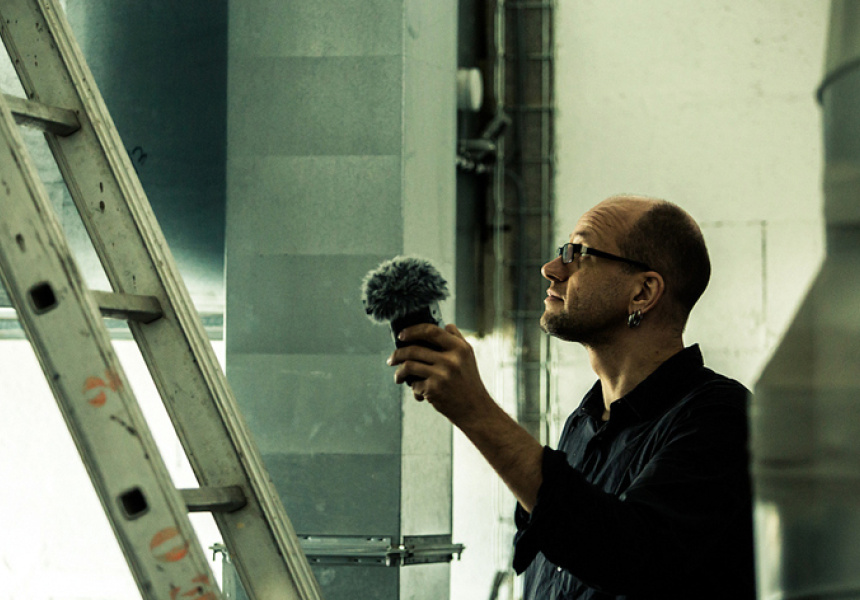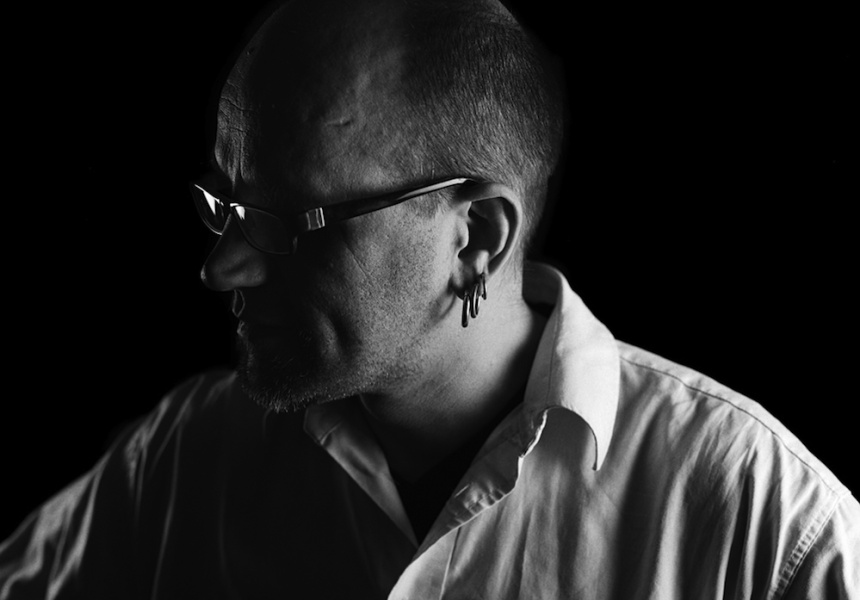Robert Henke isn’t strictly only a musician. Over the past 20 years, the German has done much more than just compose. Most notably, he was one of three men who built the first version of Ableton Live, the software that powers electronic music studios around the world. Everyone from bedroom novices to Daft Punk uses it.
Henke has also designed surround-sound rigs and other avant-garde installations, putting him as much in the realms of performance art as music. This ground-up approach is shown in Lumiere II, the show he’s been touring since February this year. It combines four lasers, a smoke machine and four-channel surround sound in a semi-live environment, all of it controlled by Henke.
Just don’t imagine the Melbourne show will be anything like a normal club gig. While Henke’s records as Monolake are largely driven by brusque, techno-inflected rhythms, Lumiere II is far more abstract and ambient. Pass Brian Eno or Air through an industrialised filter and you have a reasonable approximation. It’s music that’s cold, harsh and eerie. But it’s also beautiful.
We think you might like Access. For $12 a month, join our membership program to stay in the know.
SIGN UPBroadsheet: The original Lumiere debuted in 2013, at Unsound Festival in Poland. How has that performance evolved into Lumiere II?
Robert Henke: I first started working with lasers for an installation piece. It turned out to be much more fascinating to me than I anticipated, and people really liked it. So I started thinking about using them in a performance. And the result of this thought process was Lumiere.
It had some interesting roughness to it, but at the beginning I was under the assumption that it was a matter of practice to master this setup. After performing it 10 to 15 times, I came to the conclusion that it’s a fundamental flaw – it’s too much to ask for, having one person control sound and lasers in a live, improvised environment.
So I decided to revise my initial concept and start again from scratch. That’s Lumiere II. The difference is highly significant, because I start from a very carefully pre-composed scenario together with much more refined software which allows me to do more-refined structures visually and a different way of synchronisation sonically.
BS: So it sounds like the music is mostly pre-arranged, then the lasers are more improvisational?
RH: No, no. It’s very important to understand: this is not how it operates. There’s no separation between musical composition and visual shapes. What happens is, I create a shape, such as a circle or something as complex as several moving lines, according to some mathematical formula.
Once I have this, I create a sound that makes sense to me, in relation to the shape. That’s a very arbitrary decision, of course, but it follows a sort of audio-visual language. A circle has a softer, more-rounded sound than a bunch of noisy lines. Once this is done, I treat the visual shape and one sound as a unit – I use the same command to trigger both of them. So once I start composing, I’m composing the sounds and a visual shapes simultaneously.
BS: Lasers have been part of dance music for decades now. When most people think of them, they probably think of trance music. How does your performance change that context?
RH: Of course, the green tunnel. [laughs] I change the context by applying a few simple constraints and tricks. First, I’m not projecting towards the audience, so I’m not creating the tunnel into which you stare. I project on a screen. Second, I make a lot of use of white lasers and avoid other colours. I completely avoid green, for instance. I feel that a different colour palette immediately puts it in a different mental space, without any judgement.
BS: What sort of challenges does that present, having to replicate the set up in different venues, where you might not be familiar with the room?
RH: Actually, I do know what the rooms look like. A big part of the administrative and organisational process is getting architectural plans of the spaces, then finding places to mount the lasers and ways to place the screen. Also there are a lot of safety concerns, and different laser regulations in different countries. This show requires a lot of planning. For the Melbourne show, I’d assume something like 50 or 60 emails going back and forth just for the technical stuff.
BS: And you do all that yourself?
RH: No. [laughs] In many ways, this project marked a change in how I operate. It’s only been possible with a person doing administrative tasks for me, and with the help of a technical assistant who takes care of all the pre-concert planning and travels with me to help set up. It’s a really large-scale project.
I’m very happy about this working process. The interaction with other people in the team involves throwing around ideas and having a healthy scepticism about decisions. It’s less likely to completely run in the wrong direction if you can discuss with other people first.
BS: That’s surprising. I’d have thought that you’d be confident about most of your decisions, this far into your career.
RH: No way. I guess it’s the nature of artistic development that once you build confidence in a certain set of things, you somehow immediately jump to something new. Confidence is the enemy of evolution and innovation. It leads to doing things the way you’ve done them before, because you know they work.
Doubt is essential. It’s what keeps you moving on. It’s nice to have a great concert, but the concerts which lead to change are usually the bad ones. If everyone just comes to you and says, “Hey, that’s great what you’re doing, dude,” it’s not the most helpful way to move on.
Robert Henke's Lumiere II is part of Melbourne Music Week and will be performed at the Melbourne Recital Centre on November 19 at 7.30pm. Henke will also perform as Monolake at the MMW hub on November 18.



